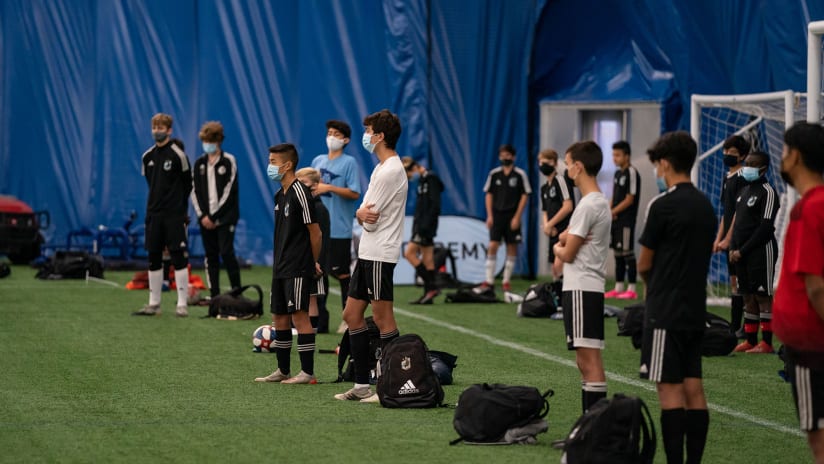The approach of spring means the ramp up into the youth soccer season, and the staff of Minnesota United’s Youth Development Program have been hard at work bringing in players for tryouts over the last month. The process of winnowing down all the prospective players to training pools with about 20 players from each birth year — meaning 40 players in each age bracket — is nearly complete, and Director of Youth Development Noel Quinn has relished that process.
“The biggest thing that we're finding in the early moments of this program,” he said, “is that the players are very excited to be here. It's obviously been a difficult year for youth development in soccer so to have this opportunity is a big deal for them. What we're seeing is not only a desire to [play for Minnesota United] but almost a need for this environment. We couldn't say enough about how the players have approached it in terms of their overall work ethic. It's been very positive in terms of their energy and what they've brought to the experience.”
The task before the Youth Development Program as it puts together U15, U17 and U19 programs for this season is one that has to balance initiative with understanding. With a goal of creating first team players for MNUFC, the program has to find and develop the best soccer talent in the state. But it also has to recognize and cultivate the soccer culture of Minnesota, which encompasses everything from academies to high schools to clubs grounded in Latino, Hmong, Somali and other communities.
“We have good raw, natural ability here in Minnesota and we need to be able to channel that,” said Quinn. “What we have to do is really define what Minnesota soccer culture is and then build from there. We could come in and create an ideal scenario for what that looks like, but it has to be real and it has to be authentic. We have to go to the level of where the players are and understand them more deeply so that we can create a program that is based on culture and identity. Because that will lead then to how we train and how we teach and ultimately, how we play.”
For now, the tryout process has honed in on decision making, technical awareness and technical execution, all of which come together as problem solving. While there are certain baseline requirements in all those individual skills as well as basic fitness, seeing how a player reacts to what they’re presented with as they move through games or small-sided activities can really set them apart.
Limitations imposed by COVID-19 have drawn out the tryout process to some extent, with the program limited to 25-player pods, but Quinn also feels that taking more time has its benefits. “It's challenging in some ways but in terms of the football stuff, it's maybe allowed us to see the players for a longer period of time,” he said. “So it makes our evaluations and the choosing of the players to be in the pools maybe more accurate.”
From here, training will begin shortly with the players selected through the tryout process and so will begin a six-week cycle of training during which the staff will continue to evaluate and develop plans for players.





